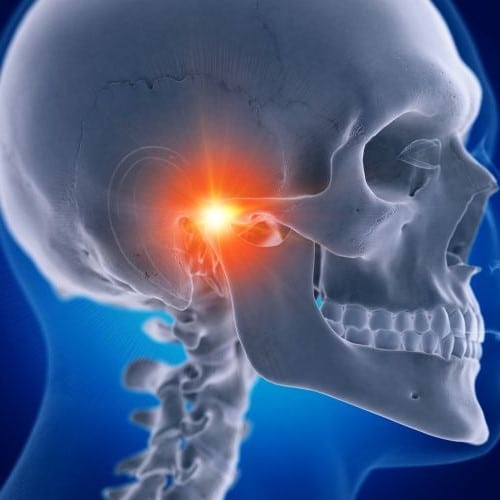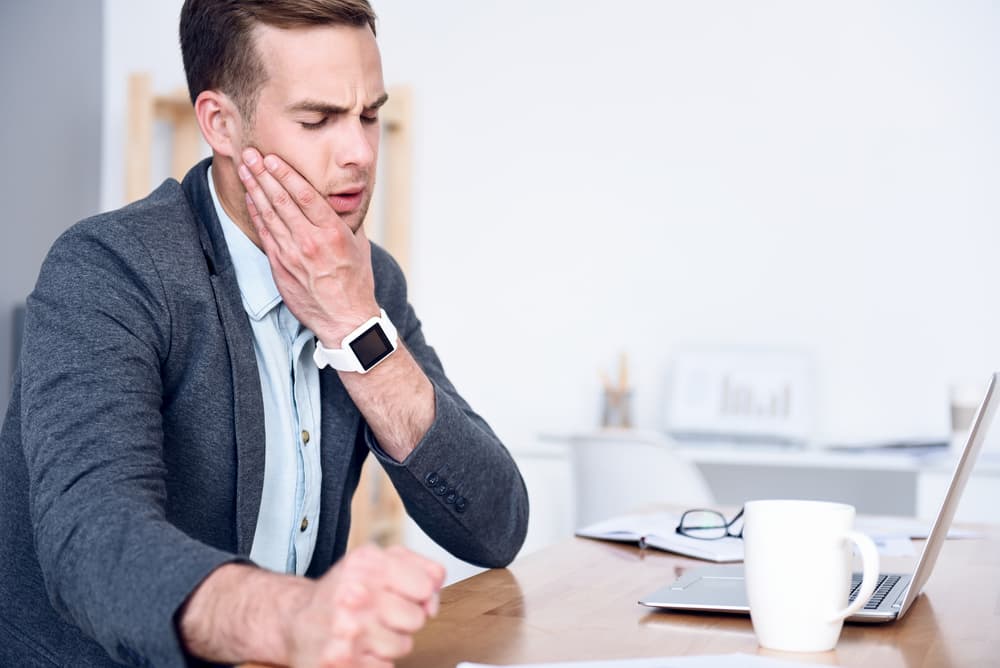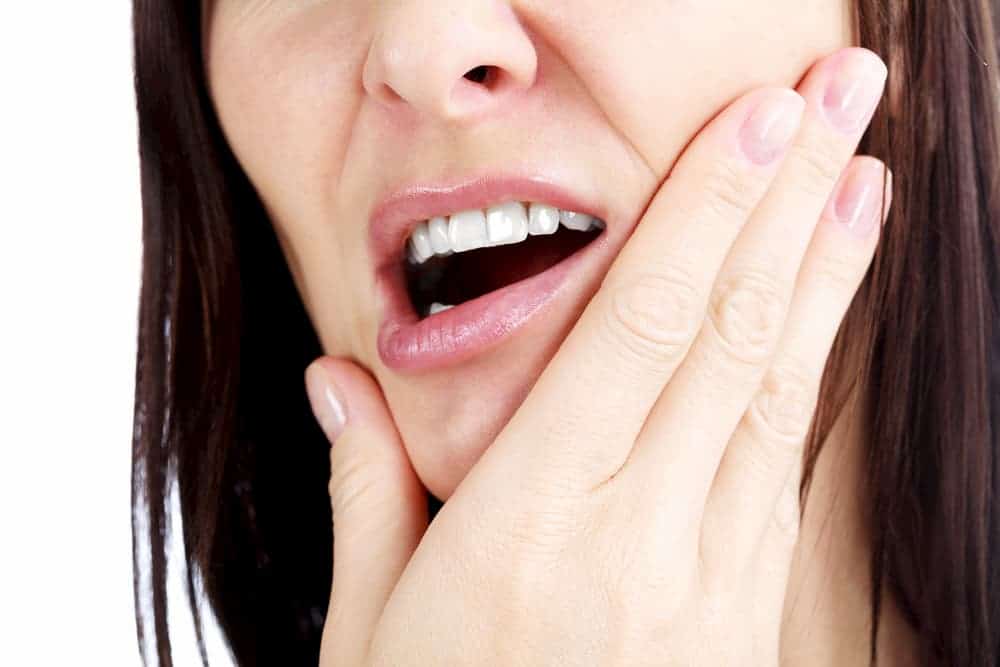What is TMJ?
This is an acronym for temporo-mandibular joint (TMJ) which is a specialists’ way of saying jaw joint. Clinically we refer to problems associated with the jaw joint as TMJ dysfunction syndrome, commonly called TMD.
Who can have TMD?
This can affect anyone although it occurs more frequently in women. In 50 per cent of whiplash cases the TMJ is involved. The symptoms can show up a little while after the accident and not necessarily apparent straight away.

TMD Symptoms Include
- Headaches and Migraine
- Earache – ringing in the ears
- Pain in the jaw joint
- Numbness in fingers
- Facial pain
- Neck, shoulder and back pain
- Worn or broken teeth left untreated when TMJ symptoms can get worse with age
Clenching and grinding (parafunction) teeth at night also puts you at risk of TMD. You may be unaware of this parafunction, but it often manifests in headaches and can be a trigger for migraines.

JVA (Joint Vibration Analysis)
TMD disorder is often progressive. A minor joint sound at present may lead onto major pain later on. This is where Joint Vibration Analysis comes in.
Traditional methods involve palpating the muscles around the jaw joint and feeling for movement. These methods have proven to be statistically inaccurate. More modern approaches have involved x-rays and MRI scans, but they expose you to radiation, are costly and not as accurate as JVA.

What is Joint Vibration Analysis?
When two smooth well-lubricated surfaces rub together, friction is minimal and very little vibration is created. If the surfaces are damaged and therefore poorly lubricated, friction is greater, and the result is vibration.
Joint Vibration Analysis record the vibrations made by joint tissues during movements. JVA technology records vibration, not sounds. The JVA is more accurate than palpation using a stethoscope or even when a patient self-report. The patterns and electronic signature of your joints are compared to known standards for healthy joints. The technology also provides important objective (factual) documentation which is vitally important in personal injury lawsuits.
Joint Vibration Analysis is equipment that measures how well the joint functions while in motion. This is accomplished by placing headphones over the joints and recording the vibrations of either soft tissue or bone-on-bone grinding.

How Does This Test Work?
The test takes 30 minutes and is completely painless. A headset is placed over your head (like stereo headphones) with the vibration sensors on the skin over the TM joint in front of each ear.
You will be asked to open wide and close all the way five to six times. That’s all there is to it! Now the computer takes over to provide your ‘Specific Vibration Signature’ to be evaluated.
If we find that you do have problems there are often fairly simple things we can recommend improving, or at the least stabilise, the health of the joints. There are devices that can be worn at night over the teeth which can be extremely beneficial to people suffering from certain types of migraine.
Migraine pain may be caused or intensified by the muscles under your scalp!
It’s perfectly normal to clench your jaws when you sleep. We all do from time to time even during normal sleep cycles. But what happens when you clench your jaw muscles 14 times more intensely than normal?
Migraine pain…chronic headache…and TMJ pain. That’s what happens.

The Mystery of Migraine Pain
People with migraine pain suffer a lot. Medical examinations, however, often show that they’re otherwise perfectly healthy. A recent medical study confirmed that people who suffer from migraine pain and chronic headache clench their jaws in a balanced, centered position. This causes extremely intense muscular contraction, but little strain on the jaw. Night-time jaw clenching usually goes unnoticed, but it can set the stage for migraine pain and chronic headache pain.
We now offer the NTI (Nociceptive Trigeminal Inhibition Tension Suppression System) device that reduces clenching intensity by 66 per cent! The NTI device is a small, nearly invisible removable device that you’ll wear when you’re asleep. You can also be fitted with a removable NTI device to wear all day long.
Unlike the traditional mouthpiece with a flat surface, the NTI device is a custom-fitted device that prevents the tooth surfaces from ever coming into intense contact. You can also eliminate high-intensity clenching and the muscular irritations that can lead to migraine pain, TMJ, and chronic headache.
To find out more about Joint Vibration Analysis or to arrange an initial consultation call us on 029 2084 3658 or contact us today using our online enquiry form.
